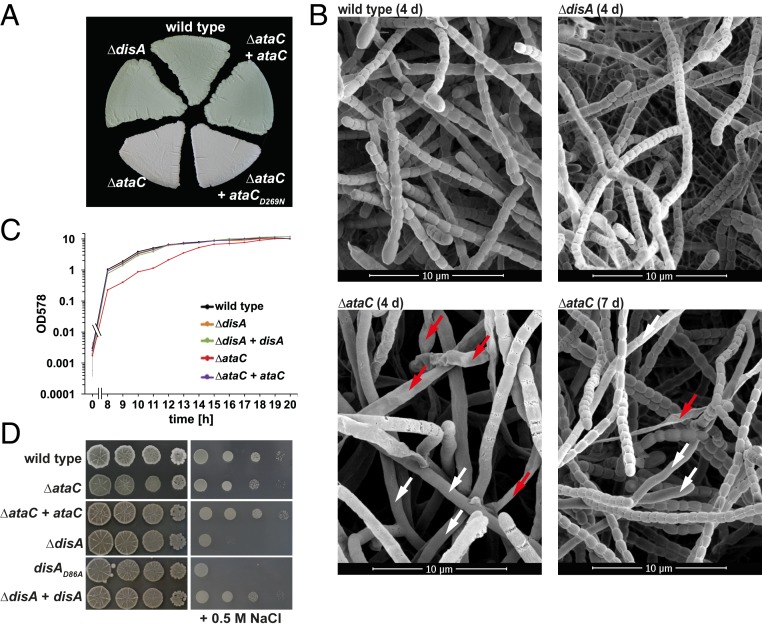Fig. 5.
Mutagenesis of c-di-AMP-metabolizing enzymes impacts development and ionic stress resistance in S. venezuelae. (A) Green morphologies of S. venezuelae wild type and ∆disA indicate the formation of mature spores after 4 d of growth at 30 °C on a solid sporulation medium (MYM agar). S. venezuelae ∆ataC failed to accumulate the spore pigment and remained white after the same incubation time. The wild-type ataC allele complements the phenotype of ∆ataC, while the enzymatically inactive variant ataCD269N does not. (B) Scanning electron micrographs showing that after 4 d of incubation on MYM, S. venezuelae wild type and ∆disA formed spores, but ∆ataC consisted predominantly of nonsporulating aerial hyphae (white arrows) and formed flat, likely lysed hyphae (red arrows). After 7 d of growth, ∆ataC produced wild-type–like spore chains, but occasional nondifferentiated and lysed hyphae were still detectable. (C) Deletion of ataC leads to a growth defect in S. venezuelae. c-di-AMP mutants were grown in a liquid sporulation medium (MYM) at 30 °C, and optical density was measured at 578 nm. ΔataC growth is delayed by 3 h and can be restored by expression of the wild-type allele under the control of its native promoter from the attBΦBT1 site. (D) Osmotic stress resistance of c-di-AMP mutants. Serial dilutions of spores were spotted on NA without additional salt or supplemented with 0.5 M NaCl and grown at 30 °C for ∼2 d. ΔdisA and disAD86A (expressing inactive DisA) are hypersensitive to salt stress.

